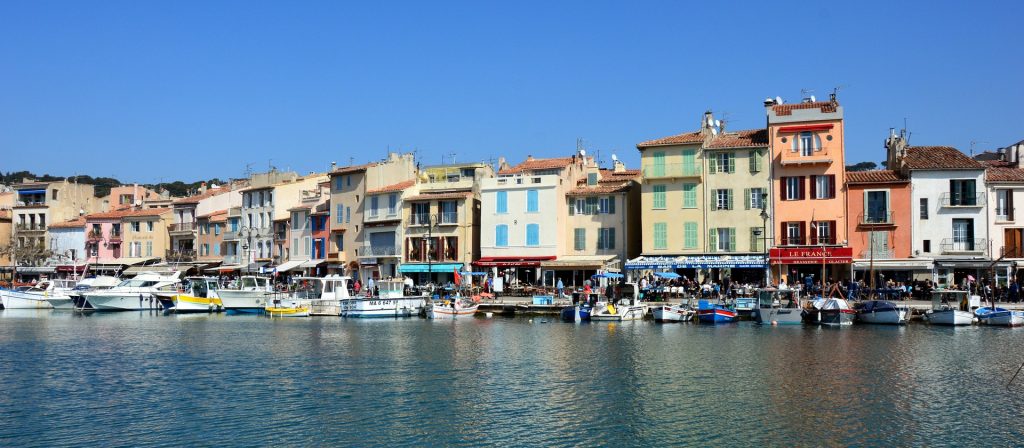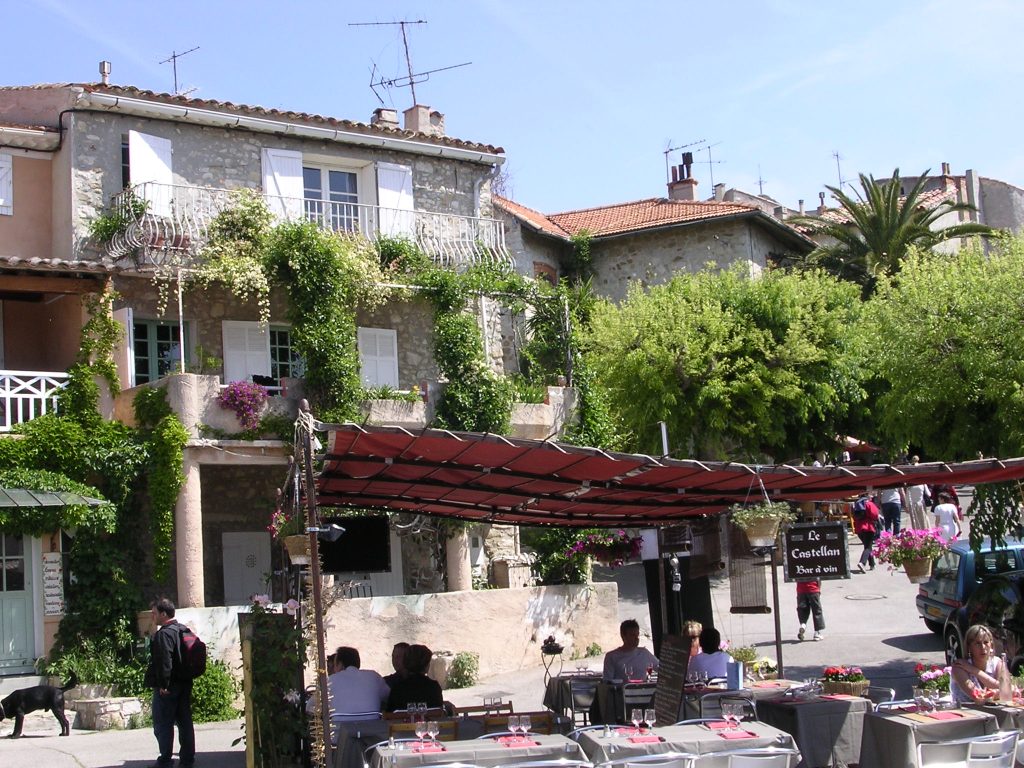Marseille, the third largest city in France (and its oldest city) has a sunbaked maritime atmosphere all its own. It’s true Provence with the sunny charm you’d expect. Marseille is also historic (two millennia), and it’s close by numerous interesting places you can access easily by car or train. Suggestions for a car circuit will follow.
If you’re interested in an overview of the city and its history, there is a hop-on-hop-off bus available. The city has a metro system which operates from 5 am to 11 pm, and until 12:30 am on Friday, Saturday, and Sunday.
Tourist Bureau is located at 11 La Canebière, which is a long avenue along the port.
Highlights of Marseille
The Old Port has been a busy place since 600 BC. Up to today, it’s a bustling place in the center of things, including the busy marina and rows of restaurants and cafés that serve fresh catch. Everywhere you go, you’ll feel the animated hum of the city meeting the sea. (photo old Port) The port used to be full of fishing boats but now is occupied more by tour boats. Take a ride or sail on one of them while you’re there to experience the Mediterranean Sea and also visit the Calanques (see below.) La Canebière is a big avenue running alongside the port where you can see and be seen as well as visit the Tourist Office.
Basilique Notre Dame de la Garde is a 19th-century church visible from all over the city. You’ll appreciate both the architecture and the views from the church over the city.

Les Calanques near Marseille
Les Calanques are limestone cliffs carved out with inlets you can visit by boat. You can access them from the town of Cassis (below), which is also really worth a visit.
Château d’If is a 16th-century prison-island you can visit with a short ferry ride from the Old Port. It’s the setting for the novel, The Count of Monte Cristo and some scenes from the movie The French Connection. There isn’t much on the inside of the prison, but you can get some good photos of the mainland and Port from there.
Fort Saint Jean Built by King Louis XIV in the 17th century, this museum is free (except for temporary exhibits) and has great views over the city. You can walk around the ramparts of the old city and visit the botanical garden as well.
Le Panier this is the oldest neighborhood in Marseille and lies north of the Old Port. Here you’ll find winding streets, vendors, and shops and enjoy the pure state of Vieux Marseille. In this small area is La Vieille Charite, a 17th-century hospice with an impressive façade and several museums inside.
Museum of the Mediterranean explores the development of the Mediterranean culture around the sea.
Musée Cantini offers a look at art from the first half of the 20th century featuring many well-known European artists, such as Matisse, Miro, Picasso, Bacon, Dufy and more.
Cours Julien is a trendy place where you can see loads of beautiful graffiti art and have great tapas. It’s in the Noailles neighborhood north of the Port, close to the Musée Cantini.
Marseille isn’t known for beaches or resorts, but you can find beaches not far away. Plage de la Grand Mar is close, and Plage du Prado is around 4 miles/ 6 km to the south (take bus 83 if you don’t have a rental car.)
There are paid parking lots all around the area. From the north, A55. From the east, A50. By train, come to the Gare St. Charles and it’s just over half a mile.
Safety: Marseille is generally safe. Like any large city, it has some neighborhoods where you won’t want to go at night. Ask for advice at the Tourist Bureau. It’s a good policy to be mindful and alert wherever you go.
Nearby Marseille
Close by the city there are varied destinations you don’t want to miss. You can choose Marseille as your base and from there make day trips to some of the other locations (approximate drive times are given) or you can choose one other town as a secondary base. The next few are all to the southeast of Marseille.

Colorful Cassis
Cassis is a frequently-photographed jewel on the waterfront. You really must visit for the memorable beauty of this smaller town and, of course, to take a boat ride to see the Calanques. (30 minutes drive southeast from Marseille.)
La Ciotat, a lovely yet unpretentious beach town, has a post all its own. You can get there in about 20 minutes from Cassis.

Le Castellet perched village
Upon a rocky hillside is the perched town of Le Castellet. Drive up the winding hill and take in the views. Stroll around the medieval streets and have lunch under the café umbrellas. (23 minutes drive southeast from La Ciotat or take bus # 8001.)
Bandol is a real beach resort surrounded by an internationally-known wine region. Sandy beaches, cliffs, and pine trees are the landscape here, as are some high-rise hotels.
If you’re interested in completing your tour with a bigger city, drive 20 minutes to get to Toulon. It’s a larger attractive city and the historic and current home to the French Navy. Take a cable car to Mount Faron which overlooks the harbor. You can also enjoy a marine museum, tour the harbor for naval history, visit a zoo, and hang out at the beach.
All of the preceding destinations are to the southeast of Marseille, but you shouldn’t forget to go north and visit Aix-en-Provence. Sample the famous markets see the many fountains, just spend the day! It will take about 30 minutes to drive there and about 45 by train.

Aix-en-Provence, France
As you can see, Marseille is a fantastic jumping-off spot for many places, as well as an exciting place in itself to visit.
Related posts:
Coastal secrets #3: Cavalaire-sur-Mer
Coastal secrets #2: Sanary-sur-Mer
0





